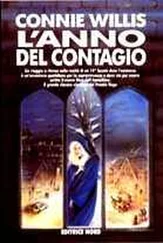I went back over to the developer and fed the eisenstadt film in. “Positives, one two three order, five seconds,” I said, and watched as the pictures came up on the developer’s screen.
Ramirez had said the eisenstadt automatically turned on whenever it was set upright on a level surface. She was right. It had taken a half-dozen shots on the way out to Tempe. Two shots of the Hitori it must have taken when I set it down to load the car, open door of same with prickly pear in the foreground, a blurred shot of palm trees and buildings with a minuscule, sharp-focused glimpse of the traffic on the expressway. Vehicles and people. There was a great shot of the red tanker that had clipped the jackal and ten or so of the yucca I had parked next to at the foot of the hill.
It had gotten two nice shots of my forearm as I set it down on the kitchen counter of the Winnebago and some beautifully composed Still Lifes of Melmac with Spoons. Vehicles and people. The rest of the pictures were dead losses: my back, the open bathroom door, Jake’s back, and Mrs. Ambler’s public face.
Except the last one. She had been standing right in front of the eisenstadt, looking almost directly into the lens. “When I think of that poor thing, all alone,” she had said, and by the time she turned around she had her public face back on, but for a minute there, looking at what she thought was a briefcase and remembering, there she was, the person I had tried all morning to get a picture of.
I took it into the living room and sat down and looked at it awhile.
“So you knew this Katherine Powell in Colorado,” Ramirez said, breaking in without preamble, and the highwire slid silently forward and began to print out the lifeline. “I always suspected you of having some deep dark secret in your past. Is she the reason you moved to Phoenix?”
I was watching the highwire advance the paper. Katherine Powell. 4628 Dutchman Drive, Apache Junction. Forty miles away.
“Holy Mother, you were really cradle-robbing. According to my calculations, she was seventeen when you lived there.”
Sixteen.
“Are you the owner of the dog?” the vet had asked her, his face slackening into pity when he saw how young she was.
“No,” she said. “I’m the one who hit him.”
“My God,” he said. “How old are you?”
“Sixteen,” she said, and her face was wide open. “I just got my license.”
Ramirez said, “Aren’t you even going to tell me what she has to do with this Winnebago thing?”
“I moved down here to get away from the snow,” I said, and cut out without saying good-bye.
The lifeline was still rolling silently forward. Hacker at Hewlett-Packard. Fired in ninety-nine, probably during the unionization. Divorced. Two kids. She had moved to Arizona five years after I did. Management programmer for Toshiba. Arizona driver’s license.
I went back to the developer and looked at the picture of Mrs. Ambler. I had said dogs never came through. That wasn’t true. Taco wasn’t in the blurry Polaroids Mrs. Ambler had been so anxious to show me, in the stories she had been so anxious to tell. But she was in this picture, reflected in the pain and love and loss on Mrs. Ambler’s face. I could see her plain as day, perched on the arm of the driver’s seat, barking impatiently when the light turned green.
I put a new cartridge in the eisenstadt and went out to see Katie.
I had to take Van Buren—it was almost four o’clock, and the rush hour would have started on the divideds—but the jackal was gone anyway. The Society is efficient. Like Hitler and his Nazis.
“How come you don’t have any pictures of your dog?” Hunter had asked.
The question could have been based on the assumption that anyone who would fill his living room with photographs of dogs must have had one of his own, but it wasn’t. He had known about Aberfan, which meant he’d had access to my lifeline, which meant all kinds of things. My lifeline was privacy-coded, so I had to be notified before anybody could get access, except, it appeared, the Society.
A reporter I knew at the paper, Dolores Chiwere, had tried to do a story a while back claiming that the Society had an illegal link to the lifeline banks, but she hadn’t been able to come up with enough evidence to convince her editor. I wondered if this counted.
The lifeline would have told them about Aberfan but not about how he died. Killing a dog wasn’t a crime in those days, and I hadn’t pressed charges against Katie for reckless driving or even called the police.
“I think you should,” the vet’s assistant had said. “There are less than a hundred dogs left. People can’t just go around killing them.”
“My God, man, it was snowing and slick,” the vet had said angrily, “and she’s just a kid.”
“She’s old enough to have a license,” I said, looking at Katie. She was fumbling in her purse for her driver’s license. “She’s old enough to have been on the roads.”
Katie found her license and gave it to me. It was so new it was still shiny. Katherine Powell. She had turned sixteen two weeks ago.
“This won’t bring him back,” the vet had said, and taken the license out of my hand and given it back to her. “You go on home now.”
“I need her name for the records,” the vet’s assistant had said.
She had stepped forward. “Katie Powell,” she had said.
“We’ll do the paperwork later,” the vet had said firmly.
They never did do the paperwork, though. The next week the third wave hit, and I suppose there hadn’t seemed any point.
I slowed down at the zoo entrance and looked up into the parking lot. The Amblers were doing a booming business. There were at least five cars and twice as many kids clustered around the Winnebago.
“Where the hell are you?” Ramirez said. “And where the hell are your pictures? I talked the Republic into a trade, but they insisted on scoop rights. I need your stills now!”
“I’ll send them in as soon as I get home,” I said. “I’m on a story.”
“The hell you are! You’re on your way out to see your old girlfriend. Well, not on the paper’s credits, you’re not.”
“Did you get the stuff on the Winnebago Indians?” I asked her.
“Yes. They were in Wisconsin, but they’re not anymore. In the mid-seventies there were sixteen hundred of them on the reservation and about forty-five hundred altogether, but by 1990, the number was down to five hundred, and now they don’t think there are any left, and nobody knows what happened to them.”
I’ll tell you what happened to them, I thought. Almost all of them were killed in the first wave, and people blamed the government and the Japanese and the ozone layer, and after the second wave hit, the Society passed all kinds of laws to protect the survivors, but it was too late, they were already below the minimum survival population limit, and then the third wave polished off the rest of them, and the last of the Winnebagos sat in a cage somewhere, and if I had been there I would probably have taken his picture.
“I called the Bureau of Indian Affairs,” Ramirez said, “and they’re supposed to call me back, and you don’t give a damn about the Winnebagos. You just wanted to get me off the subject. What’s this story you’re on?”
I looked around the dashboard for an exclusion button.
“What the hell is going on, David? First you ditch two big stories, now you can’t even get your pictures in. Jesus, if something’s wrong, you can tell me. I want to help. It has something to do with Colorado, doesn’t it?”
I found the button and cut her off.
Van Buren got crowded as the afternoon rush spilled over off the divideds. Out past the curve, where Van Buren turns into Apache Boulevard, they were putting in new lanes. The cement forms were already up on the eastbound side, and they were building the wooden forms up in two of the six lanes on my side.
Читать дальше












